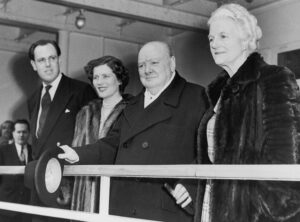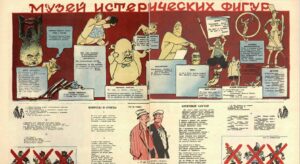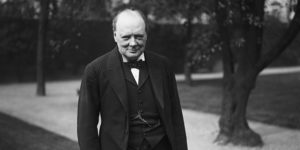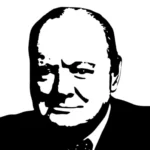Finest Hour Extras
Charles Morin and the Search for Churchill’s Nom De Palette
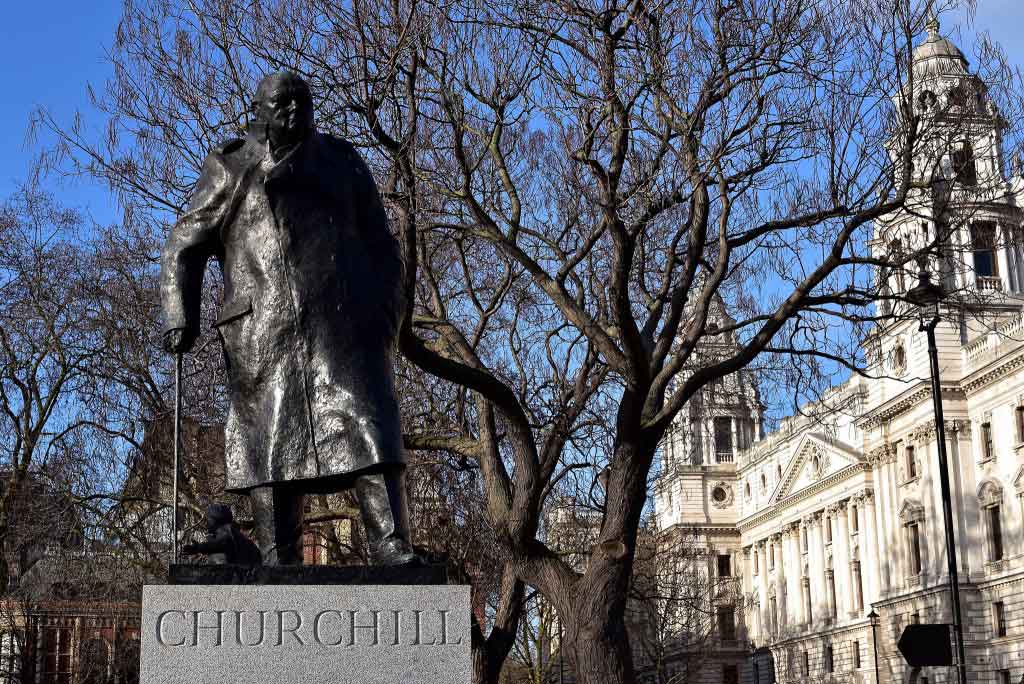
Winston Churchill, Parliament Square, London © Sue Lowry & Magellan PR
June 18, 2014
David Coombs
Why did Winston Churchill exhibit his paintings under the name of a real painter only recently deceased?
The first public exhibition of Churchill’s paintings was held in Paris in 1921 at the Galerie Druet, a famous and important establishment at 20 rue Royale, specializing in Post-Impressionist painters of the early 20th century. The paintings were shown under the pseudonym of Charles Morin, and six were sold.
This is the story, though the surrounding facts are curious. First, the gallery archives contain no reference to the exhibition, and second, Charles Morin was the name of a real French painter, who died in 1919.
In January 1921, Churchill was in Paris for discussions about extending his responsibilities, as Britain’s newly appointed Colonial Secretary, to Palestine and Mesopotamia: intense and complex deliberations detailed at length in Sir Martin Gilbert’s official biography.

2025 International Churchill Conference
Despite his official duties, Churchill was able to take time off to think about his paintings in the company of Major Gerald Geiger, head of the British Military Mission to Paris: an old school friend and one of WSC’s contemporaries at Sandhurst. On 13 January, Major Geiger wrote to Sir Archibald Sinclair, then Churchill’s private secretary: “The S. of S. [Secretary of State] went with me and an art critic to visit the works of the painter CHARLES MORIN. The works of this artist were produced and criticised for forty minutes by the gentleman in question and the S. of S. was very interested!” Unfortunately, there is no clue in Geiger’s lengthy letter to the gallery or location he and Churchill visited.1
Geiger’s letter is quoted in part by Sir Martin Gilbert, who explains that the “Charles Morin was in fact Churchill himself; it was the first public exhibition of his paintings.”2 In his accompanying Companion Volume, Sir Martin adds that the “Morin” paintings “were being exhibited for the first time, under a pseudonym,” and that Churchill had suggested the name “Mr. Spencer,” which he had sometimes used “when seeking to travel incognito to France on munitions business during the war.”3
Whether Geiger knew that “Morin” was Churchill is not clear, although his use of capitals for “Charles Morin,” and the exclamation point, suggest that he knew the truth and was giving Sinclair a “nudge.”
To be strictly accurate, one of Churchill’s paintings, “Portrait of Sir John Lavery in his Studio” (Coombs 507) had been exhibited two years earlier in 1919 at the annual exhibition of the Royal Society of Portrait Painters in London. Still, the Paris exhibition appears to be the first where several pictures by Churchill were displayed.
The London exhibit was mentioned in a 1953 essay on Churchill as artist by the distinguished museum director, art historian and critic, Professor Thomas Bodkin (1887- 1961), who added: “The only other recorded instance of [Churchill] submitting his work for exhibition occurred shortly before the late war, when the French painter Charles Montag organized a one-man show for him in Paris at which six of his canvases, described as being by Charles Maurin [sic] were sold.”4 It seems likely from this that the “art critic” and “gentleman in question” mentioned by Geiger to Sinclair was Charles Montag.
As Lady Soames observed in her book on her father’s painting hobby, Professor Bodkin “does not mention prices,” though it “must have given Charles Morin great pleasure to know that at this, the first showing of a number of pictures, he had a market.”5 We have since learned that the prices were modest, at least to certain friends. Churchill wrote to Jean Hamilton, wife of Sir Ian in October 1921:
You expressed a wish to buy one of my pictures the other day. I have been doubtful about selling any of them because I don’t think they are good enough and also because I am steadily improving. Nevertheless as several people have been asking to buy, I have said that I will sell them at £50 a piece this year.6
The work Lady Hamilton chose was “Ightham Mote” (Coombs 235). Charles Montag evidently played a key role in the exhibition. As Lady Soames wrote, Montag “arranged for his friend to exhibit his paintings at the Galerie Druet,” where Montag had held “a one-man exhibition of his work in 1914….”7 (As far as I know, this is the first published reference to the specific location of Churchill’s exhibition.)
Although he is little regarded today, Montag was a friend and regular painting companion of Churchill until his death in 1956. Born in Switzerland in 1880, he must have been as energetic as he was charming, and amazingly well-connected with Impressionist painters, including Monet and Renoir, as well as Post- Impressionists like Bonnard and Matisse. He turned these talents to good account as an exhibition organizer and adviser to art collectors.
Montag was a landscape painter, which would have given him much practical insight and sympathy to Churchill’s favourite subjects— another likely reason why he and Churchill took to each other. Two paragraphs from Churchill’s famous essay, “Painting as a Pastime,” refer I think to Montag—and throw considerable light on Churchill’s innately modest attitude to his own works:
Frenchmen talk and write just as well about painting as they have done about love, about war, about diplomacy, or cooking. Their terminology is precise and complete. They are therefore admirably equipped to be teachers in the theory of any of these arts. Their critical faculty is so powerfully developed that it is perhaps some restraint upon achievement. But it is a wonderful corrective to others as well as to themselves. My French friend, for instance, after looking at some of my daubs, took me round the galleries of Paris, pausing here and there. Wherever he paused, I found myself before a picture which I particularly admired. He then explained that it was quite easy to tell, from the kinds of things I had been trying to do, what were the things I liked. Never having taken any interest in pictures till I tried to paint, I had no preconceived opinions. I just felt, for reasons I could not fathom, that I liked some much more than others. I was astonished that anyone else should, on the most cursory observation of my work, be able so surely to divine a taste which I had never consciously formed. My friend said that it is not a bad thing to know nothing at all about pictures, but to have a matured mind trained in other things and a new strong interest for painting. The elements are there from which a true taste in art can be formed with time and guidance… 8
Over the years I have ineffectually tried to find a trail that might lead to the discovery of the “Charles Morin” paintings sold in Paris. Lady Soames’s mention of the Galerie Druet set my mind racing. Surely such a famous gallery would have archives referring to Churchill’s exhibition, under his own name or that of Charles Morin?
Not quite. I learned that the archives of the Galerie Druet were held at the Bibliotheque Wildenstein Institute in Paris. Through the kindness of the archivist, Mme. Amélie Naux, I was able to study a detailed list compiled by M. Bernard Crochet of the exhibitions held at the Galerie Druet in 1921. There were many wellknown names including some peintres anglais modernes such as Harold Gilman, Robert Bevan, John Nash and Edward Wadsworth. But to my disappointment, there was no mention of Morin or Churchill. This was a blow as well as a full stop. However as I thought further about everything, I came to some tentative conclusions:
First, Churchill’s exhibition might have been a kind of temporary “display,” which is not an uncommon practice for commercial galleries.
Second, Montag and Bodkin almost certainly knew each other professionally. Both were enthusiastic about Churchill’s talents as an artist and Montag was the likely source of Bodkin’s 1953 story about the Paris sale of Churchill’s pictures. The passage of time and intervention of World War II might also explain Bodkin’s inaccurate references to WSC’s pseudonym, and his dating the Paris exhibition “shortly before” World War II.
These mysteries were soon compounded. As the author of the official catalogue of Churchill’s paintings and a guardian of his reputation in this regard, I’m quite often sent for my opinion images of hitherto unknown pictures said to be by Sir Winston, often signed with initials. Neither the initials nor the paintings are generally found to be his work—not only for technical reasons, but because of the lack of provenance stretching back to Churchill himself.
Yet in 2008, to my total astonishment I was sent from two different sources images of two landscapes, clearly signed “Charles Morin.” Neither was in any way typical nor representative of Churchill’s known subjects, nor was either painted in anything approaching his usual manner. Both showed, however a definite professional deftness and hand.
Some basic research confirmed that Charles Camille Morin (1846- 1919) was in fact a known and exhibited French artist who painted landscapes in a style derived from the earlier French Barbizon School.9 A description of both pictures confirmed that they were his.
So here is the big question: Why in 1921 was Churchill assigned the pseudonym of a well-known French artist dead for two years?
While we don’t know the subjects of Churchill’s paintings exhibited in Paris in 1921, it is interesting to speculate. In the circumstances of the occasion, they are likely to have been French scenes. And, while we may never know the actual pictures, there may be clues in the illustrations Churchill chose for his 1921-22 Strand Magazine article “Painting as a Pastime.” Perhaps one was of Mimizan, his friend the Duke of Westminster’s property near Bordeaux (page 31). Another might have been a favourite haunt in the South of France such as St. Jean Cap Ferrat (page 32).
So much for conjecture. For the sake of the artist, let us put aside these unanswered questions and turn to the warm friendship between a President and Prime Minister.
In December 1941 Franklin Roosevelt received a letter from Edward Bruce, chief of the Smithsonian’s Fine Arts Section, asking him to forward a message to “Charles Marin,” cheekily inviting the artist to lunch. Bruce was under the impression that “Marin” was Churchill’s pesudonym. As Roosevelt told Churchill later, Bruce was “an old friend and a really grand person—but completely unorthodox.” Bruce’s letter led to an exchange of telegrams at official level between Washington and London enquiring about “the Prime Minister’s nom de palette.” Back came the answer on 31 January 1942 from Churchill’s private secretary: “Correct name is CHARLES MORIN not repeat not MARIN.”10
These telegrams were discovered for me by Dr. Lynsey Robertson of the Churchill Archives Centre, when I was on the hunt for references to Churchill’s use of the Morin pseudonym. She also generously directed me to a published letter from Roosevelt in February 1942, asking Churchill about his use of a nom de palette (part of this letter I have already quoted above): “These people who go around under assumed names render themselves open to all kinds of indignity and suspicion,” wrote the President. “Some day I want to see a painting by this alias fellow—and some day I hope you will get enough time to resume the painting and that I will be able to return to making ship models and collecting stamps!”11
As it happens, that wish was granted in part, sooner surely than either friend expected. In 1943, after the Casablanca Conference, Churchill insisted to Roosevelt: “You cannot come all this way to North Africa without seeing Marrakesh….I must be with you when you see the sun set on the snows of the Atlas Mountains.”
After their joint visit, the Prime Minister painted the scene, “the only picture I ever attempted during the war” (opposite) which he later gave to Roosevelt as a memento.12
Endnotes:
1. Churchill Archives Centre, Cambridge, CHAR 16/75/20-21, with kind assistance of Dr. Lynsey Robertson.
2. Martin Gilbert, Winston S. Churchill, vol. IV The Stricken World 1917- 1922 (London: Heinemann, 1975), 515.
3. Martin Gilbert, ed., Winston S. Churchill, Companion Volume IV, Part 2, Documents, July 1919-March 1921 (London: Heinemann), 1307, n. 2.
4. Charles Eade, ed., Churchill by His Contemporaries (London: Hutchinson, 1953), 420-21. Coincidentally it was in 1947, at a Royal Academy exhibition, that I as a small boy first saw a Churchill painting, “Winter Sunshine, Chartwell” (opposite).
5. Mary Soames, Winston Churchill: His Life as a Painter (Boston: Houghton Mifflin, 1990), 38.
6. Celia Lee, Jean, Lady Hamilton 1861-1941: A Soldier’s Wife (London: Celia Lee, 2001), 237.
7. Life as a Painter, 39
8. Winston S. Churchill, “Painting as a Pastime,” The Strand Magazine, December 1921 and January 1922. The quotation is from the book version of this long essay (London: Cassell, 1948), 27-28.
9. Charles Morin entry, Benezit Dictionary of Artists (Paris: Grund, 2006).
10. Churchill Archives Centre, Cambridge, CHAR 2/446A/38-39. “Marin” is French for sailor: could Bruce have been hinting at the “Former Naval Person?” -PHC
11. Warren F. Kimball, ed., Churchill and Roosevelt: The Complete Correspondence, 3 vols. (Princeton: Princeton University Press, 1984), I:358-59.
12. Winston S. Churchill, The Second World War, vol. IV, The Hinge of Fate (London: Cassell, 1951), 622-23.
Subscribe
WANT MORE?
Get the Churchill Bulletin delivered to your inbox once a month.

